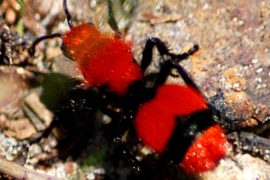One loves them, the other hates them: not everyone likes to see snails in the aquarium. While many aquarium owners lovingly care for different species of snails, others are terrified when they discover the unloved guests on their aquarium plants. But everyone agrees on one thing: Excessive multiplication of snails is undesirable – no matter how they got into the tank. Here you can learn more about aquarium snails, why it is not always necessary to control snails in the aquarium, and how to control the snail population.
How do snails get into the aquarium?
Aquatic snails or their spawn often enter the tank with aquarium plants that have been purchased or passed on by other aquarium owners. If you want your aquarium to be completely free of snails, it won’t be easy – because they are almost everywhere. However, it is possible to ban unloved snails from the aquarium as far as possible or to contain their population. In this way, you can benefit from the snails in the aquarium without attracting negative attention or becoming a nuisance.
It is normal for snails or snail spawn to be found on newly purchased aquatic plants if the plants have grown underwater and have been in the nursery for a long time. If there are no water snails on such plants, this can be a sign that aggressive pesticides have been used. The poison that is still in the plants and gets into the water is often fatal not only for aquatic snails but also for other invertebrates such as shrimp or crabs. Snails on newly purchased aquarium plants are therefore no cause for concern – on the contrary, they show that the plants have grown in the nursery in an animal-friendly environment.
Buying aquarium plants without snails?
So-called in-vitro plants are guaranteed to be free from snails. These are aquatic plants that have grown in the laboratory and are grown in a special nutrient solution. Since they haven’t been submerged in a nursery, make sure the plants are slug-free as well as algae and parasite-free. The purchase price of in-vitro plants is often hardly higher than that of conventionally cultivated aquarium plants – a worthwhile purchase for anyone who wants to avoid snails in the aquarium. You can find out more about plants from in vitro culture, including meristem plants, in our guide on the subject.
These snail species are often found on aquarium plants
- Ramshorn snail (Planorbarius corneus)
It is cared for by many aquarium owners and bred in many color variations. The natural form is brown. The shell of the snail looks like a posthorn and can reach a size of up to four centimeters. - Bladder Snail (Family Physidae)
Bladder snails have a pointed shell and grow to be less than an inch. Around 80 species are known worldwide. - Plate snail (Family Planorbidae)
This type of snail looks very similar to the ramshorn snail. Her house, however, is flat and tilted sideways. It usually stays very small in the aquarium.
Attention: If you discover a pointed mud snail (Lymnaea stagnalis) on your aquarium plants, only place them in larger aquariums. It can grow up to seven centimeters.
In the garden pond, on the other hand, pointed mud snails are in very good hands. Pointed mud snails like to eat freshwater polyps, among other things, and are used to combat them.
Snails in the aquarium – this is why they are useful:
Snails, when present in moderation, are very useful in the aquarium. They contribute to the diversity of the fauna and tirelessly devour leftover food and dead plant parts. This will keep the water clean and ensure a pretty and healthy aquarium. Most species also do not eat living plants, as they are said to do. Only in the case of mass propagation and the associated scarcity of food do they lay hands on horticultural greenery.
However, too many water snails can be annoying because they disturb the overall picture. The aquarist then has to intervene to regulate this. Suitable and unsuitable measures are described below. One type of aquarium in which snails should definitely not be missing is rearing tanks for young fish. The water snails used here not only eat the food leftovers before they can spoil, but they also clean the panes of bacterial growth, which can be fatal to many fish larvae.
Let’s note the following:
- Snails eat leftover food
Snails act as the “health police” in the aquarium by eating leftovers that the fish and other aquarium inhabitants have not eaten. Food leftovers lying on the bottom have a negative effect on the water quality. - Snails eat dead animals
If a fish dies, it is not always immediately obvious in a crowded community aquarium. Snails will immediately take care of a dead animal and start eating it. - Snails eat algae
With their sharp mouthparts, snails grate the growth of algae from discs and aquarium plants. In this way, they help to keep the aquarium free of algae. Don’t expect miracles here, though. Snails are more of a support for regular aquarium maintenance than the solution to an algae problem. The ramshorn snail Planorbella scalaris is an exception. The animals constantly eat algae and keep my two desk aquariums completely free of algae. However, the floating plants of the genus Limnobium are also part of their diet. On the other hand, Cryptocoryne, Echinodorus, Bucephalandra, Anubias, and Microsorum are not touched. - Snails eat dead plant matter
For aquarium owners, it often looks as if snails are attacking the aquarium plants. In fact, they very rarely eat healthy aquatic plants – usually only when they can’t find any other food. However, by tirelessly rasping off dead plant parts and consuming diseased plants, they support healthy plant growth in the aquarium.
Tip: Snails are a good indicator that something is wrong in the aquarium. If the snail population increases significantly or if the snails gather under the water surface, you should definitely look for the causes.
Snails in the aquarium: fight or care?
Snails have many aficionados in aquaristics. Many species of snails are kept in aquariums and are commercially available. These include, for example:
- apple snail
- ramshorn snail
- tower snail
- racing snail
- antler snail
- and much more m.
The apple snail grows very large and is highly valued by enthusiasts. There are different types on the market. While the Pomacea diffusa (formerly Pomacea bridgesii) are completely harmless, other species, such as the paradise snails from the Marisa genus, eat everything that is green.
The slightly larger Pomacea canaliculata, which are also commonly sold as apple snails, do not belong in planted aquariums either. We recommend the website www.applesnail.net for those who want to learn more about the subject. Here you can find all the important information about apple snails and the differences between the individual species are well illustrated with drawings.
Ramshorn snails can be found in different color breeds, such as blue or pink, and are among the most popular aquarium snails. Tower snails live in the ground and help to clean and aerate it – similar to earthworms in the ground. Other snail species, such as the snail, are advertised as algae eaters. However, snails are not a sufficient solution to combat an algae plague. Here you should better go to cause research and check the water parameters, lighting, and other factors. You can find tips on how to do this in our article on combating algae in the aquarium.
Tips against snails: you should keep your hands off them
Aquarium snails are animals that are fun to watch and perform many important tasks as they tirelessly roam the tank. They’re easy to take a liking to—unless they show up en masse. This can happen with snails from the trade as well as with imported snails. Then the fascination is quickly over.
Tips on how to remove snails from the aquarium are widely distributed. However, many of them are not only useless but also harm the aquarium plants.
Soak aquarium plants in mineral water
It is often said that mineral water is a good way to remove snails and planarians from aquarium plants. However, watering newly purchased aquarium plants in mineral water is not an effective remedy against snails – even less against planarians. The plants, on the other hand, can be damaged by the treatment.
Bathing in potassium permanganate solution
Many aquarists disinfect newly purchased aquarium plants in a solution containing potassium permanganate. It is normally used to disinfect the tank and accessories, for example after an infection in the aquarium. But aquatic plants can also be treated with a potassium permanganate solution. However, the snail spawn, which can be found on the plants, usually survives this procedure completely unscathed.
Fight aquatic snails chemically
Means are commercially available to chemically combat snails in the aquarium. These agents not only kill snails, but also other invertebrates. The use of chemical agents in the aquarium must always be considered. There are usually more environmentally friendly and cheaper alternatives that do not harm the aquarium plants and inhabitants.
Use fish that eat snails
It is often advised to use snail-eating fish, such as net loaches or puffer fish. However, before you buy one, be sure to ask yourself: Are you really interested in caring for this species? Are you ready to buy or breed snails when the snail plague is over? Do the fish match the size of the tank and the other stock? Loaches, for example, need a lot of space in the aquarium, which not everyone can offer.
Use predatory snails
Predatory snails are also often recommended as a solution to the snail plague. However, here too it is important to consider: What happens to the predatory snails once the snails have been destroyed? Are the predatory snails themselves welcome aquarium inhabitants? Here, too, it often comes down to one problem being replaced by another.
So you can regulate the population of snails in the aquarium
Snails are useful and welcome aquarium inhabitants. Only when they spread too much are they usually perceived as a nuisance. However, limiting the snail population is not that difficult. Some simple tips:
- Collect snails by hand
- Lay out bait or snail traps
- Feed very sparingly
The easiest way is to regularly collect the small snails by hand, for example during daily feeding. They can also be crushed on the glass if you keep animals in the tank that will eat them.
An effective snail bait in the aquarium is a slice of cucumber or zucchini placed on the bottom. Many snails quickly find their way here and can be easily taken out and removed.
Snail traps are also commercially available. They are constructed in such a way that the snails can get in but not out again. They are attracted to some food. However, the small plate-shaped traps on which the snails collect are better. No fish or shrimp can get caught here, which often die in small snail traps due to the lack of oxygen caused by the bait.
Tower snails also often gather on the aquarium panes during the night. This is a sign that something is wrong in the aquarium environment. Somewhere decay processes consume a lot of oxygen from the water. A dirty filter or a thick layer of sludge in the substrate is usually the cause. However, this is an advantage when fighting snails. The tower snails, which cannot be reached during the day, can simply be scraped off the panes with a net when the aquarium light is switched off. However, you should still quickly get to the bottom of the cause of the lack of oxygen.
Tip: It is best to place a snail trap in the aquarium overnight. When the lights are off, snails are most active. In the morning they remove the trap and quickly kill the animals by pouring boiling water over them.
Keeping snails in check in the aquarium: very simple
Basically, snails only become a problem and multiply uncontrollably if there is too much waste in the aquarium:
- dead plant material
- undiscovered animal carcasses
- Leftover food in the aquarium
Feeding the fish too much is almost always a reason for a plague of snails in the aquarium. Feed tablets, for example, consist of the finest feed particles, which are pressed into tablet form using high pressure. The food swells in the water and a not inconsiderable part disappears into the surrounding substrate. Here it cannot be reached by the fish and leads to an invasion-like proliferation of tower snails. So always make sure to only feed as much as will be eaten in a few minutes. Separate feeding is only necessary for very large snail species (such as the apple snail). Even if the fish are fed sparingly, smaller snail species will find enough to eat in a normal setup aquarium.
What are your experiences with snails in the aquarium? We welcome comments!





